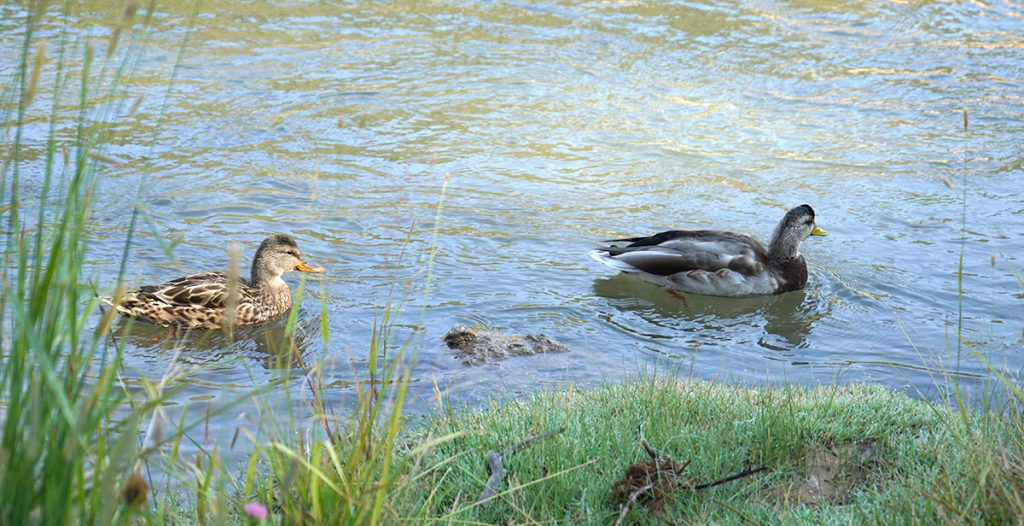
This year’s monsoons were a welcome reprieve from the dry conditions of previous years to both human and avian kind. New Mexico has been in a drought since 2000, and a paper recently published in Nature Climate Change found this to be the worst drought since 800 A.D. Droughts are projected to increase in severity and frequency as climate change continues. Global warming is human caused, large corporations and the super-rich contribute more than their share of greenhouse gasses; 100 companies cause 70% of all carbon emissions. Taylor Swift alone emitted 8,293.54 tons of carbon with six months of private jet use — 1,184.8 times more than the average person’s total annual emissions.
Drought conditions hurt the smallest and weakest animals most, like the Rio Grande silvery minnow, which saw the loss of its Albuquerque habitat this year after the Rio Grande ran dry in the city for the first time in 40 years. Fish, plants, and insects make up the majority of food sources for birds and without reliable feeding spots spread out across the land they congregate together in the few remaining watering holes, leading to a drastic increase in disease-spreading vectors. Starvation and dehydration are other lethal effects of prolonged drought. With changes in resources birds have to alter their historic migration routes, making an already precarious journey even more dangerous.
Where is the water going? In New Mexico and Taos County, it goes mainly to agriculture. Water for agricultural use makes up 2,376,065 acre feet, or 76% of statewide water usage according to an info-graphic produced by Samantha Stroud of UNM in 2020. Of that 2,376,065 acre feet of water, 425,618 acre feet (or 33%) are lost to off-farm conveyance. In Taos County, the 2015 Water Use Report recorded 66,605 units (the report does not specify whether the water is measured in gallons or acre feet) used for agriculture out of a total of 84,771 units for the whole county. The most prevalent method of irrigation used by 51% of farmers is sprinkler irrigation, which loses 35% of water to evaporation and runoff. Flood irrigation is the second most common, used by 45% of users and losing about half of every gallon used.
This method is favored because it’s the most inexpensive and easiest to set up. With 3.1% of farmers using drip irrigation, the most efficient method, only 10% of water is lost to evaporation and runoff.
With the majority of water from a state in a historic drought going to agriculture, one might assume the state gets some return on investment. Not so. Just 3% of New Mexico’s GDP comes from agriculture, and our state produces 0.83% of all food in the country. NM Political Report noted in 2021 that in spite of this drastic disparity in water usage and profit, there hasn’t been a single large legislative effort to reduce or cap water use by the agriculture sector. New Mexicans wouldn’t have to worry about water rationing were it not for a 100,000 acre feet debt owed to Texas by New Mexico under an archaic water agreement reached in 1938 called the Rio Grande Compact. Colorado ignored this compact from its signing until 1966, when New Mexico and Texas sued Colorado into compliance. Despite owing 1 million acre feet of water to New Mexico, Colorado had its debt wiped clean in 1985 due to the Elephant Butte reservoir reaching capacity, a term stipulated in the original agreement. This did nothing for New Mexico’s debt to Texas, which has decreased from its original 500,000 acre feet but remains unpayable due to drought.
Overuse of soil across the nation has led to a massive depletion of topsoil nutrients, and this in turn affects the nutritional value of fruits and vegetables. Today’s carrots and oranges have a fraction of the vitamins and minerals they contained seven decades ago, losing up to 38% of their nutrients compared to 1950. One solution to this was proposed by the UN in their sixth IPCC (Intergovernmental Panel on Climate Change) report: return land management to indigenous hands. What we now call “sustainable agriculture” is what indigenous peoples the world over used as standard farming practices. Instead of trying to extract as much food and usage from the soil as possible for the sake of profit, sustainable agriculture takes a long-term view and prioritizes leaving future generations with harvests rather than starvation. Intercropping (planting more than one crop together), fallowing (giving fields a seasonal break from growing), agroforestry (managing trees, crops and animals for the mutual benefit of each) and permaculture (sustainable agriculture systems modeled after naturally occurring patterns) are among the techniques modern farmers have rediscovered as ways to produce food without depleting resources and nutrients.
Even if we do manage our water responsibly and avert a catastrophic drought, this does not change the dangerous amount of PFAS (Per- and polyfluoroalkyl substances) in drinking water and rainwater. These toxic chemicals can lead to infertility, liver damage, and some types of cancers. As scientists search for a solution to these toxic particles (studies of microbes are currently showing promise), the reproductive capability and lifespan of Americans continues to decrease.
All this is to say that birds are our canaries in the coal mine – if they’re having a hard time with drought conditions, it’s just a preview of what’s to come for humans. Responsible water management cannot wait if we want future generations to enjoy the feathered beauties we see today, let alone enjoy safe drinking water.
Author
-

Bryce Flanagan moved from Sacramento, CA to Taos County in 2016, and has lived in Questa for two years. He's passionate about the unique and beautiful wildlife of our state and is a regular contributor to the Questa Del Rio News.
View all posts


